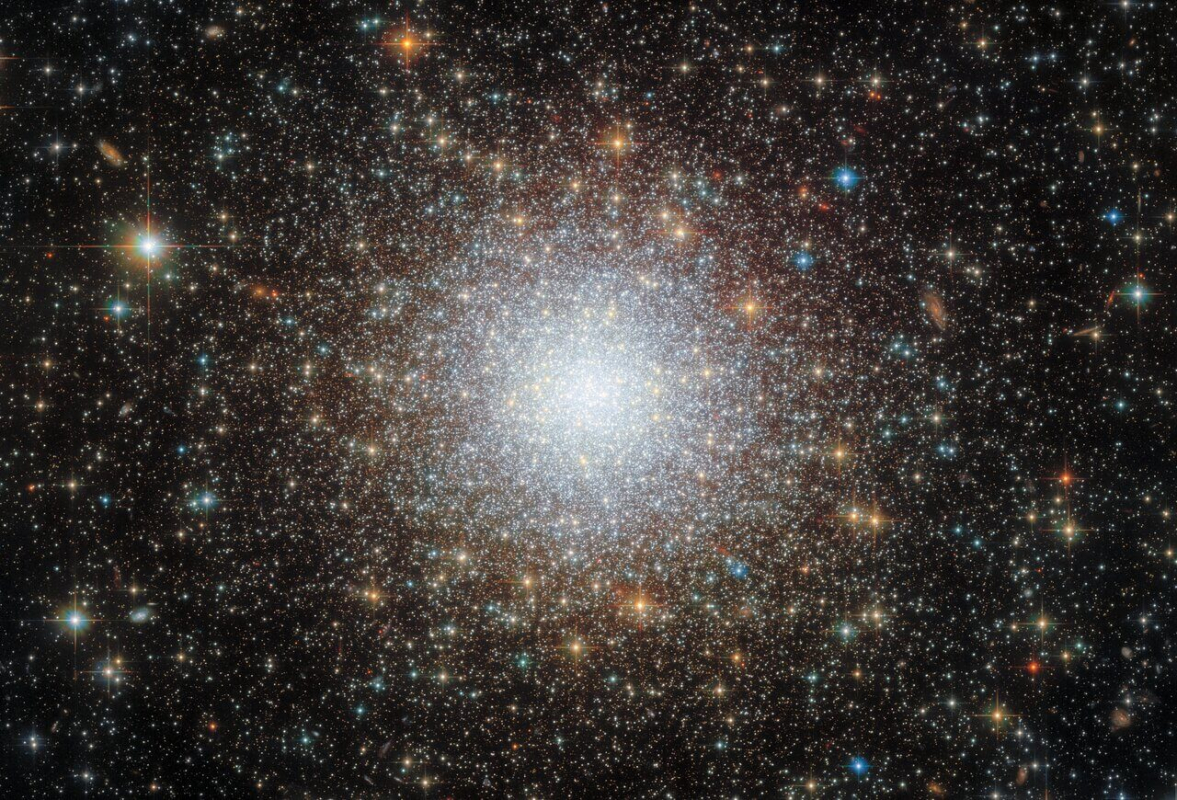
This photo, captured by the Hubble Telescope, showcases NGC 2210 - a globular cluster of stars in the Large Magellanic Cloud, located 157,000 light-years from Earth. This galaxy is gravitationally linked to the Milky Way.
Globular clusters, comprising thousands or millions of stars, are characterized by high stability and longevity, making them ideal objects for studying ancient stellar populations.
A 2017 study revealed that the age of the Large Magellanic Cloud's (LMC) globular clusters is comparable to the oldest clusters in the Milky Way. NGC 2210 is estimated to be about 11.6 billion years old, making it one of the youngest in the study, though only a few billion years younger than the Universe itself.
The other studied LMC globular clusters turned out to be older, some even more than 13 billion years. This highlights that the oldest clusters in the LMC and the Milky Way formed around the same time, despite the galaxies' independent origins.
Besides its scientific value, this cluster also stands out for its visual beauty. The stars are densely packed, creating an impressive spectacle.
If someone lived on a planet orbiting a star at the center of such a cluster, the night sky would be filled with stars, creating a spectacle much more saturated than what we see.
Earlier, researchers from Durham University in the UK, led by Associate Professor of Physics Anna McLeod, for the first time recorded an accretion (planet-forming) disk around a star in another galaxy. This disk was found around star HH1177, located in the Large Magellanic Cloud, a dwarf galaxy situated 160,000 light-years from Earth.
To detect the disk, the team used the ALMA telescope in Chile, analyzing the gas movement speed around the star. McLeod expressed surprise and delight at discovering the first extragalactic accretion disk, noting its importance for understanding the process of star and planet formation not only in our galaxy but in others as well.
What is a Globular Cluster of Stars
A globular cluster of stars is a type of astronomical object that represents a large concentration of stars with a spherical shape. These clusters contain from several hundred thousand to millions of stars, which are gravitationally bound to each other.
Main Characteristics of Globular Clusters:
Age: Globular clusters are considered some of the oldest objects in the Universe, their age can reach several billion years.
Star Density: Stars in globular clusters are very closely spaced, especially at the cluster's center, where the star density can be extremely high.
Distribution in the Galaxy: Globular clusters are usually found in the halos of galaxies, including the Milky Way, where they orbit around the galaxy's center.
Stellar Composition: The stars in globular clusters are often old and low in metals, indicating that they formed in the early epochs of the Universe.
Studying the Universe's Past: Due to their age and stability, globular clusters are important objects for studying star formation processes and galaxy evolution in the early Universe.
Overall, globular clusters provide a unique opportunity for astronomers to explore the ancient history of our Universe, as well as the nature of stars and galaxies over billions of years.




